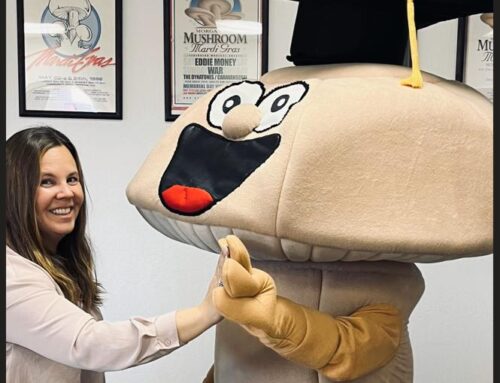Published in the February 3-16, 2016 issue of Morgan Hill Life
By Marty Cheek
When my mother caught me being naughty as a child, she would often remind me of the fact that the night of my birth was an extremely unpleasant experience for her. It took long hours of painful labor for me to make my debut into the world during the early morning hours of Nov. 29, 1966. At nearly 11 pound, I looked like a 6-month old, the nurse had commented to her.
Recently I discovered that while I went through intense birth, across America in the grand ballroom of New York City’s Plaza Hotel, America’s richest and most famous people enjoyed “The Party of the Century.” I learned about this gala after having the pleasure of watching Bill Tindall perform as the American writer Truman Capote in the one-actor stage show “Tru” produced by the South Valley Civic Theatre group.
During the show, Capote mentions that the height of his social fame was a Black and White Ball he put on in 1966 that brought together many of the most famous people in America. I did a Google search to find out more about the famous party. I was surprised to find out it had taken place during the night of Nov. 28-29. Hollywood celebrities, best-selling authors and powerful politicians and their spouses came together to celebrate at a masquerade that was the talk of the town for many months before that evening. The guest list included Robert Kennedy, Frank Sinatra, John Steinbeck, Andy Warhol, Gregory Peck, James Michener, Irwin Shaw, Arthur Miller, Lord and Lady Ogilvy, Philip Roth and Liza Minelli.
Just a caveat: please don’t get the idea these notable people were somehow celebrating my moment of birth. It’s a safe bet that while these people were enjoying glasses of Taittingere champagne, they had absolutely no idea that Mrs. Gisela Cheek was suffering through intense labor at Hazel Hawkins Memorial Hospital in Hollister to produce the future publisher of Morgan Hill Life.
How the biggest celebrity party in New York City’s history came about is a story in itself. Its inspiration began in 1959 with a 291-word New York Times article headlined “Wealthy Farmer, 3 of Family Slain.” Writer Truman Capote at that time was famous for his novella “Breakfast at Tiffany’s.” The whispy-voiced, five-foot-three-inch author was looking for material for a book that would deliver him into the pantheon of literary legend. When he read the article, something clicked. He left New York City and headed by train west to the the plains of Kansas, reaching the farm town of Holcomb. He spent six years working on his “nonfiction novel” about how Dick Hickock and Perry Smith brutally murdered their impossibly All-American victims, the Clutter family.
“In Cold Blood” was published in January 1966. The book became a runaway best-seller. Fifty years later, it’s considered a classic, a landmark work of literature that helped to ignite the true crime genre. Its success contributed to today’s true crime TV shows such as “Serial,” “The Jinx” and “Making a Murderer.”
With “In Cold Blood’s” publication, Capote arrived at the height of his fame and fortune. He made millions. The stardom fed his ego. He wanted to showoff. In June 1966, he conceived the idea of an audaciously over-the-top party for New York City’s high society. It would be bad taste to throw it for himself, so he decided to hold it in honor of his friend, Washington Post publisher Katherine Graham. The year earlier her husband had committed suicide so he hoped this would cheer her up.
Capote kept a school composition book always with him, carefully jotting down people’s names as possible guests, or scratching them off the list. He enjoyed teasing people, saying that he might put them on the list or he might not.
The night of the party a gauntlet of TV reporters and paparazzi stood outside the Plaza Hotel entrance as the stream of celebrities passed through to be greeted personally by Capote and Graham. The famous found themselves socializing behind elaborate masks. They were served a midnight meal of scrambled eggs, sausages, biscuits, pastries and spaghetti and meatballs. Also included on the menu was chicken hash, a specialty of the Plaza Hotel’s kitchen and one of Capote’s favorite dishes. The entire party cost the author $16,000 (or about $117,000 in today’s dollars).
Around 3 a.m., Frank Sinatra told Capote he would be leaving. The author begged him to stay. Sinatra’s departure would be a sign to other guests the gala ball was coming to an end. Sinatra left anyway. Over the course of the next couple of hours, other guests followed.
I imagine after the last guest left, Capote remained in the silent grand ball room as employees cleaned up. Perhaps it was the beginning of the end for him. He had reached the summit of his success with what is now called “the pinnacle of New York’s social history.” I imagine that around the time I was born those early morning hours, Capote might have sat down at an empty table and painfully realized he was a sad little man being used by his New York high society friends – just as he used then. Perhaps he felt overwhelmed by the work that awaited on his next book “Answered Prayers.” The novel’s title came from a quote by Saint Teresa of Ávila: “Answered prayers cause more tears than those that remain unanswered.”
That unfinished novel plays a key role in SVCT’s show “Tru.” Capote turned against his high-society friends and wrote about their empty lives as thinly-veiled characters in the book. Several excerpts were published in Esquire magazine in 1975. His friends felt betrayed. Many of the famous he had entertained at his gala now ostracized him. His life unraveled into increasingly bizarre behavior fueled by drugs and alcohol.
Perhaps the end of his Black and White Ball was the beginning of a long and lingering literary death for Capote. He never finished another book. He kept up his celebrity status on TV talk shows. He died at age 59 in Los Angeles on Aug. 25, 1984 of complications from alcoholism.








